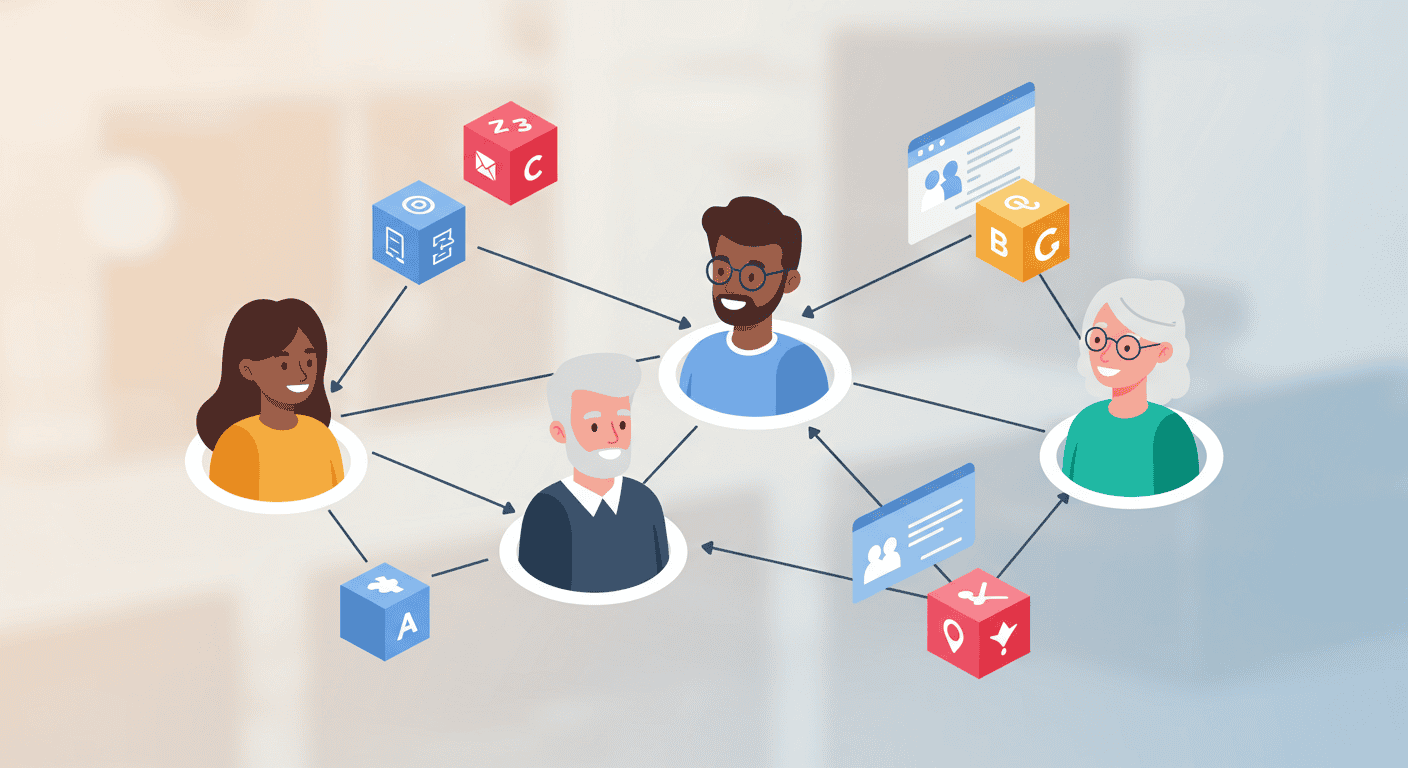
In today’s fiercely competitive job market, professionals are seeking new ways to gain an edge and ensure sustainable growth. The convergence of evolving workplace models, rapid technological advancements, and shifting industry demands requires an agile approach to career development. Two strategies have emerged as foundational pillars for success in 2024: mentorship & microlearning. Both methods complement each other by combining personalized insights with flexible learning formats that fit into even the busiest schedules.
Whether you are transitioning into a new field, aiming for a leadership role, or simply expanding your expertise, integrating mentorship and microlearning can accelerate your progress. This guide delves into the mechanics of each approach, explores how they reinforce one another, and provides actionable steps to craft a tailored plan for your professional journey.
Understanding Mentorship
Mentorship is a structured partnership in which an experienced professional shares knowledge, industry insights, and constructive feedback to guide a mentee’s development. It can be formal—through company programs or professional associations—or informal, such as peer mentorship circles. Effective mentorship fosters trust, clarity on career objectives, and accountability for progress.
Research shows that employees who engage in mentorship report higher job satisfaction, faster skill acquisition, and stronger professional networks. The mentor’s role extends beyond technical advice; it includes sharing personal experiences, navigating organizational culture, and providing emotional support during challenging transitions.
-
- Technical guidance and domain-specific expertise
- Career mapping and goal alignment
- Feedback on performance, communication, and leadership skills
- Networking introductions and referrals
;
By choosing a mentor whose career path aligns with your aspirations, you benefit from targeted advice and insider knowledge that textbooks and online courses cannot replicate.
Demystifying Microlearning
Microlearning breaks down complex topics into concise, focused segments that require minimal time investment—often 5 to 15 minutes per session. Formats include short videos, interactive quizzes, flashcards, and infographics. This approach caters to modern attention spans and promotes spaced repetition, improving retention and recall.
Unlike traditional workshops or multi-hour webinars, microlearning allows you to integrate learning seamlessly into daily routines—during commutes, coffee breaks, or between meetings. It adapts to evolving skill requirements, ensuring you stay current without downtime from your core responsibilities.
-
- Video micro-lectures on emerging tools and techniques
- Interactive case studies and scenario simulations
- Mobile-optimized lessons for on-the-go access
- Adaptive assessments that focus on knowledge gaps
;
Leading platforms like LinkedIn Learning, Coursera’s microcredentials, and mobile apps such as Blinkist offer curated microlearning tracks tailored to in-demand competencies.
Synergy Between Mentorship & Microlearning

When combined, mentorship and microlearning create a multiplier effect. A mentor can recommend specific micro-courses that address your personal development areas, while microlearning modules keep your skills sharp between mentorship sessions. This cyclical feedback loop accelerates learning and ensures the practical application of new knowledge.
For example, after a mentor coaching session on public speaking techniques, you might follow up with a 10-minute video on persuasive storytelling. In the next meeting, you discuss challenges, receive further pointers, and move on to advanced micro-modules—streamlining the journey from theory to mastery.
Strategies for Leveraging Mentorship
To capitalize on mentorship, approach it methodically. First, identify professionals whose achievements align with your goals—whether within your organization, industry networks, or online communities. Use platforms like MentorCruise, SCORE, or company mentorship initiatives to find suitable matches.
Once a mentor is on board, set clear expectations. Co-create an agenda with milestones, preferred communication channels, and meeting frequency. A structured plan reduces ambiguity and maximizes the value of each interaction.
-
- Draft specific development goals and share them in writing
- Prepare discussion points and progress reports in advance
- Solicit actionable feedback on current projects
- Request introductions to their professional network
- Offer your own skills or volunteer help to maintain reciprocity
;
Document insights, follow up on advice, and celebrate small wins to demonstrate growth and keep momentum high.
Implementing Microlearning in Your Daily Routine
Integrating microlearning effectively demands discipline and planning. Begin by auditing your weekday schedule to identify consistent 5 to 10-minute windows—during coffee breaks, walking between meetings, or at the end of the workday. Treat these slots as non-negotiable learning appointments.
Next, choose a blend of formats that suit your learning style: short videos for visual learners, quizzes for those who benefit from testing, and infographics or cheat sheets for quick reference. Bookmark or subscribe to channels that deliver fresh, relevant content weekly.
-
- Schedule daily reminders on your calendar
- Use a learning-tracker app or spreadsheet to log completed modules
- Form microlearning study pods with colleagues for accountability
- Set monthly themes—such as data analytics or leadership—to focus your learning path
- Incorporate reflection prompts to solidify takeaways
;
By weaving microlearning into your routine, you build a habit that scales learning without sacrificing productivity.
Common Pitfalls to Avoid
Even the best strategies can falter if misapplied. Avoid these mistakes to keep your dual approach on track:
-
- Neglecting to align microlearning with long-term goals
- Choosing a mentor who lacks industry relevance or engagement time
- Overloading on content without practical application
- Skipping regular check-ins to review progress and adjust plans
- Failing to document insights, leading to repeated mistakes
- Relying solely on free content without vetting quality
;
Staying vigilant against these pitfalls ensures sustained momentum and meaningful skill gains.
Measuring Success and Iteration
Establishing clear metrics is essential to evaluate the effectiveness of your mentorship and microlearning efforts. Start by identifying key performance indicators (KPIs) that map directly to your career objectives.
Consider using tools like Trello or Notion to track module completion, project milestones, and mentor feedback in one centralized dashboard. Review this data monthly to assess progress and make data-driven adjustments.
-
- Percentage of microlearning modules completed vs. planned
- Quality scores from mentor feedback sessions
- Number of new skills applied in live projects
- Advancements in role, title, or compensation linked to new competencies
;
Iterate on your plan based on trends: accelerate areas showing high ROI and revisit approaches that underperform.
Case Study: A Real Career Transformation
Meet Daniel, a software engineer aiming to transition into a product management role. He partnered with a senior PM mentor who guided him through stakeholder management and roadmap planning. Simultaneously, Daniel completed daily microlearning modules on agile methodologies, UX fundamentals, and data analytics via a mobile platform.
Within four months, Daniel led his first cross-functional sprint planning session, secured positive feedback from his mentor, and achieved a 25% improvement in sprint delivery velocity. His combined approach not only expanded his skill set but also bolstered his credibility for a formal PM promotion.
Creating Your Action Plan
Use this framework to design a personalized roadmap that harmonizes mentorship and microlearning:
1. Define your 6- and 12-month career objectives. 2. Research and shortlist potential mentors aligned with those objectives. 3. Audit your current skill gaps and select microlearning tracks to address each. 4. Schedule recurring mentorship sessions and daily microlearning slots. 5. Set milestones for feedback, project application, and measurable KPIs.
-
- Draft a written commitment outlining goals, timelines, and success metrics
- Use calendar invites to book mentorship and learning sessions in advance
- Leverage collaboration tools to share progress with mentors
- Join communities or alumni networks for peer accountability
- Conduct quarterly reviews to refine your plan
;
By following a structured action plan, you maintain momentum and adaptability as your career evolves.
Conclusion
In a rapidly evolving professional landscape, reliance on static development methods can leave you behind. Mentorship provides the human insight and strategic guidance you need, while microlearning delivers efficient, just-in-time skill acquisition. Together, they form a dynamic duo that helps you learn faster, apply skills sooner, and achieve tangible career milestones in 2024.
Embrace this two-pronged approach today: seek out a mentor who resonates with your vision, commit to daily microlearning habits, and track your progress diligently. With dedication and the right support, you can transform your career trajectory and unlock new opportunities for growth and success.









Leave a Reply